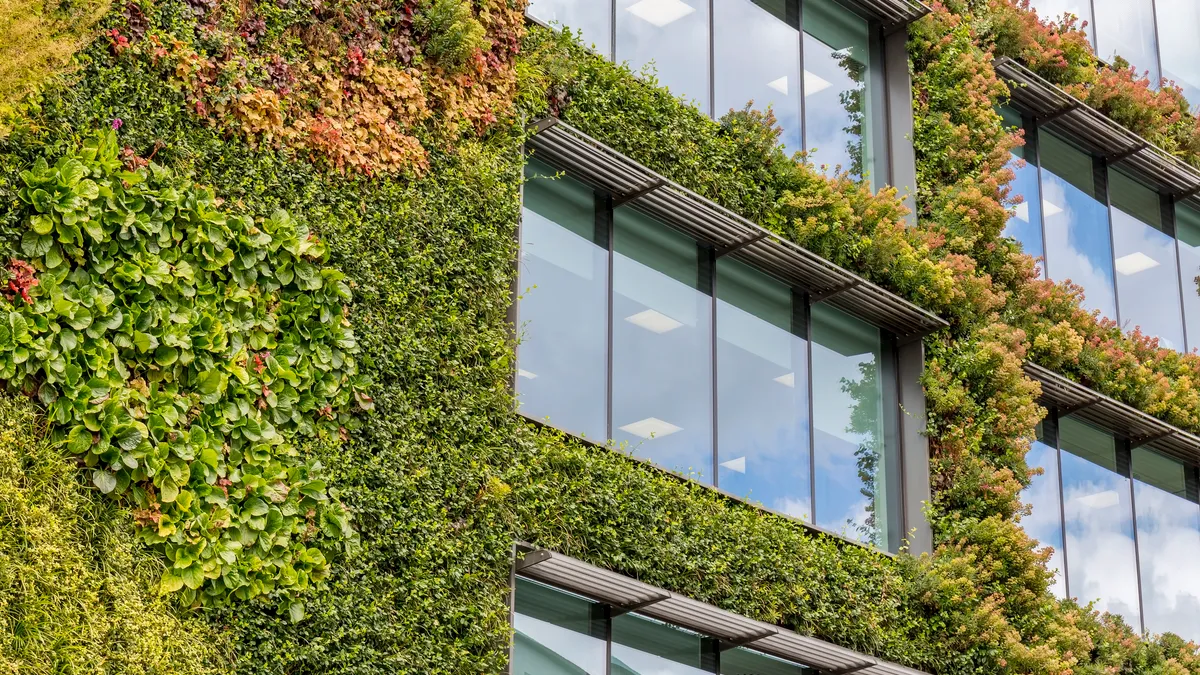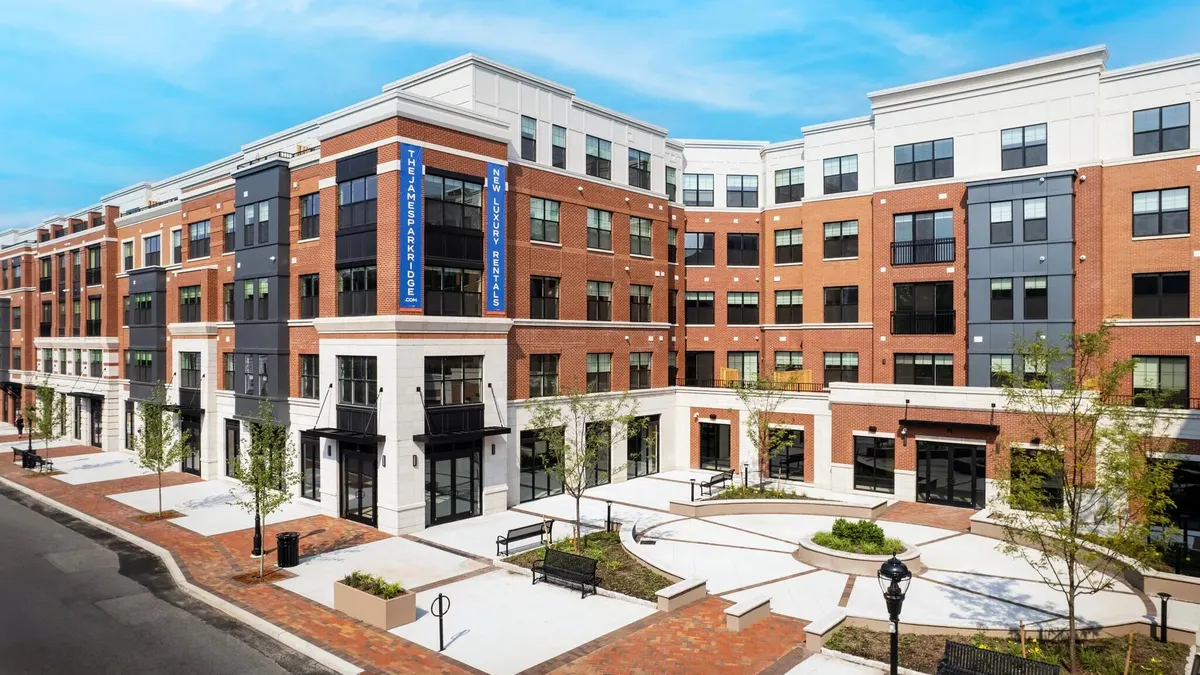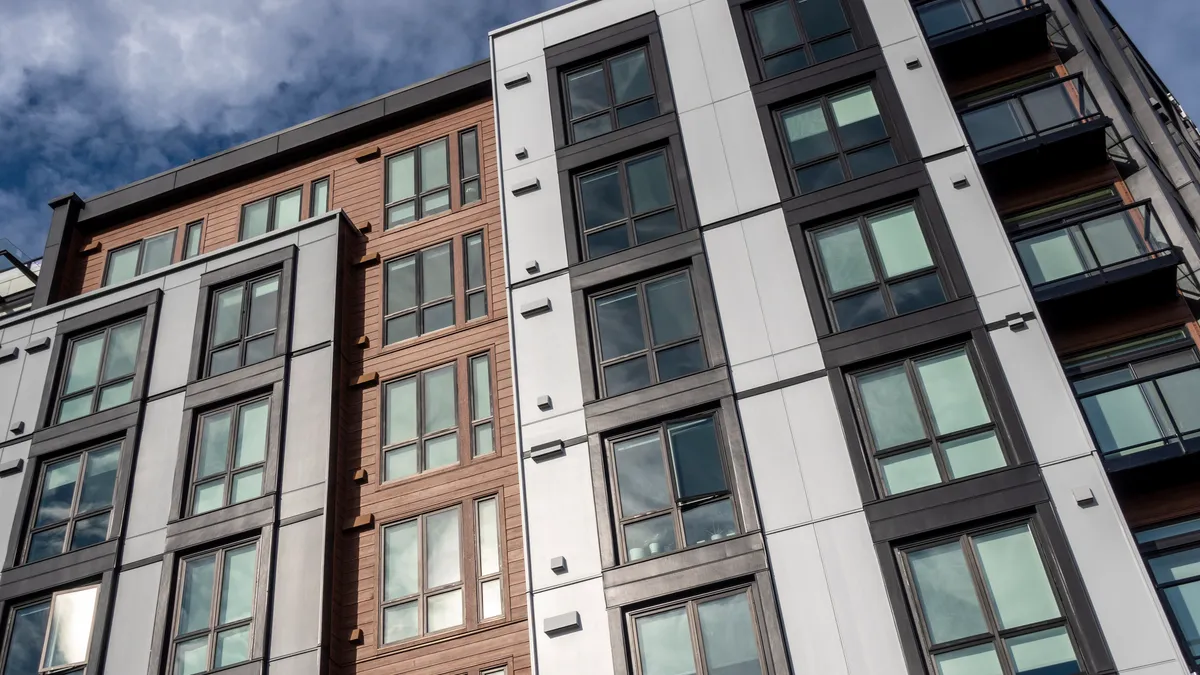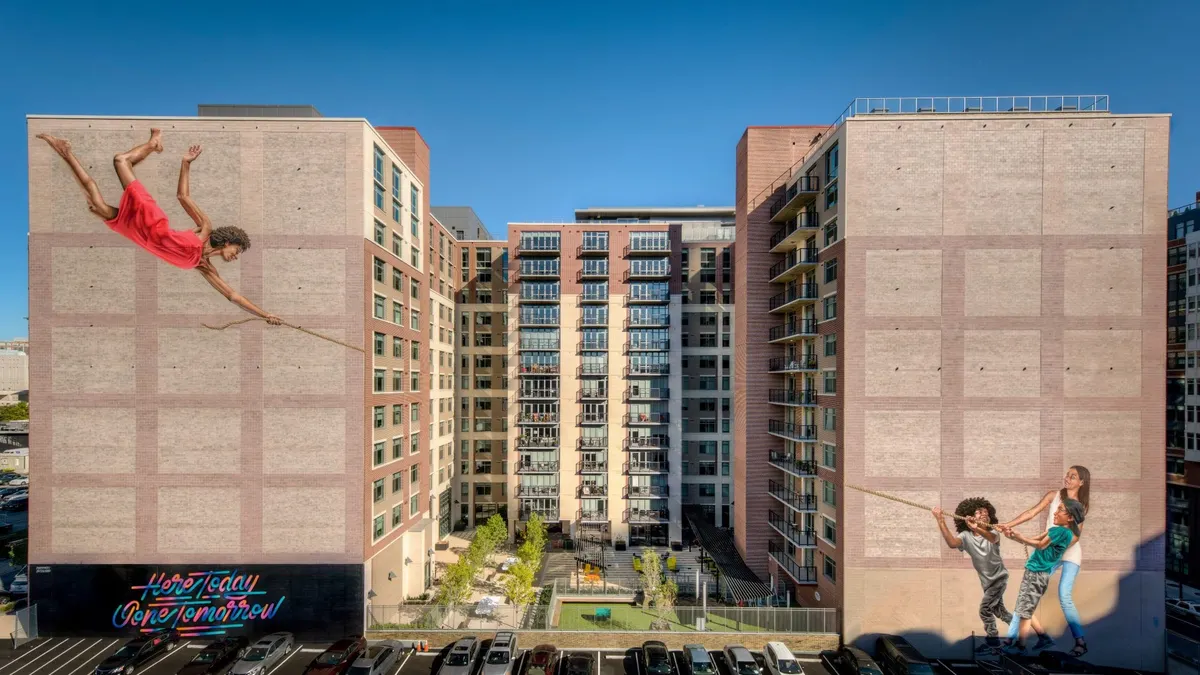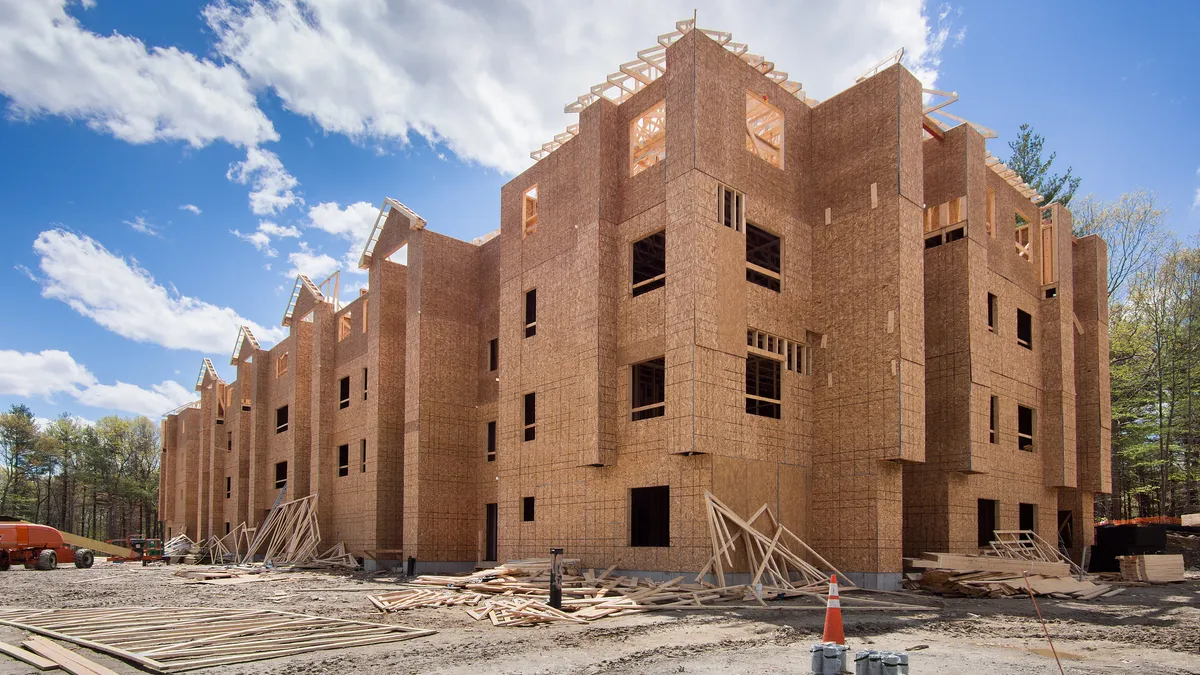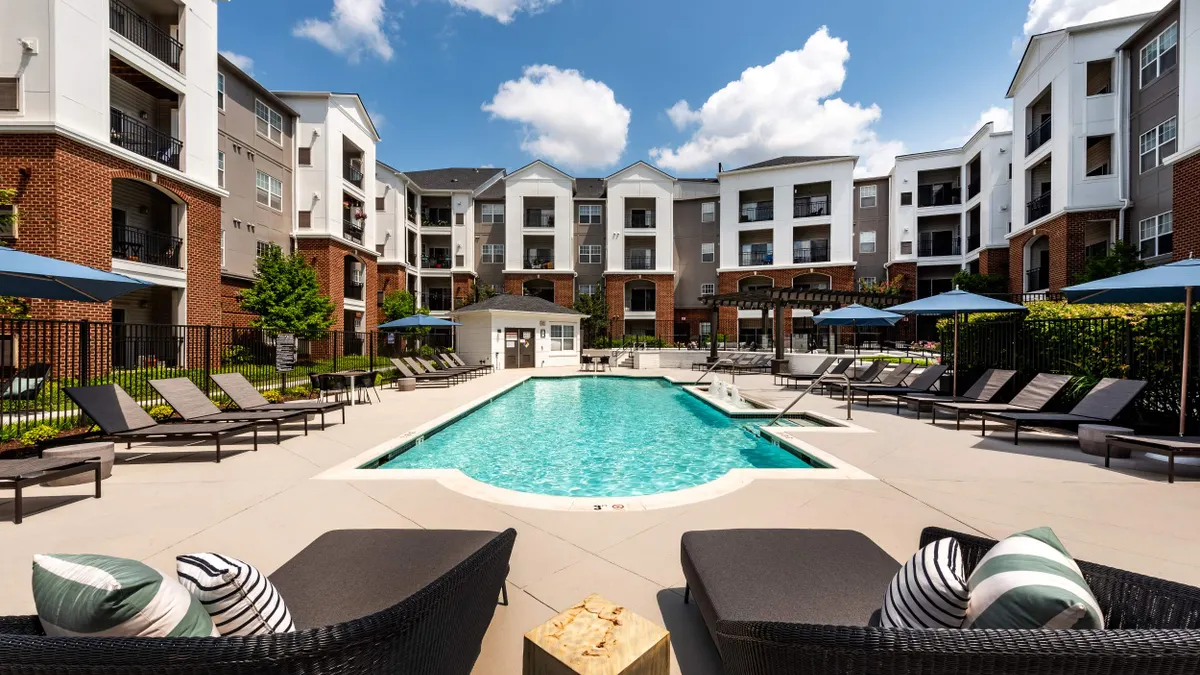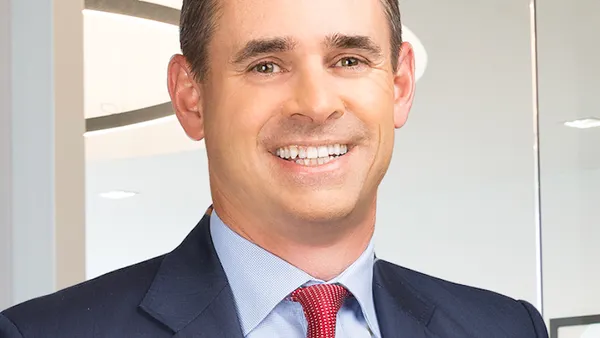For a wide range of reasons, sustainable construction and building features have become a vital consideration in multifamily development, a group of panelists said during a recent webinar hosted by San Francisco-based certification body BREEAM USA.
Of special concern is striking a balance between the higher upfront cost of sustainable building features and the eventual benefits of resilience and energy savings, considered together with recent financial headwinds such as higher interest rates.
“While capital budgets might be strained right now, there are a lot of creative ways for us to continue to pursue sustainability initiatives in a lot of our properties,” said Giuliana Kunkel, associate director of environmental, social and governance at Whippany, New Jersey-based MetLife Investment Management, during the webinar.
“There’s more free money out there than ever before, through things like the [Inflation Reduction Act] incentives,” Kunkel continued. “We’ve found creative ways to move sustainability initiatives forward without having to really spend very much capital.”
MetLife’s strategies have included conducting Energy Star “treasure hunts,” a framework through which building employees look for ways to save energy; putting EV charging stations in multifamily properties; and establishing solar power purchase agreements.
Rewards and regulations
Incentives for sustainable development run the gamut from tax breaks for using solar panels to regulations that make certain features a requirement for new or renovated projects in a given area. This scenario is something of a carrot and a stick — with sticks becoming more and more common over time, according to Breana Wheeler, session moderator and director of operations at BREEAM USA.
“We've seen building performance standards popping up all over the place,” Wheeler said, referring to state and local policies that set energy or emissions-based performance requirements for buildings. Maryland, for example, has set interim energy savings benchmarks for any building 35,000 square feet or larger, with the goal of achieving net zero by 2040.
“We can see the trajectory here is that we're probably going to see a lot more of that in some markets,” Wheeler added.
For that reason, sustainability experts from multifamily developers and investors are in agreement that their companies need to not only stay ahead of these requirements, but to do so in a way that works to their benefit.
Thomas Stanchak, managing director of sustainability at St. Petersburg, Florida-based real estate investor Stoneweg US, has noted a greater interest in sustainable development from potential partners — and says that, in this particular environment, knowledge in this field is a “differentiator.”
“If you're not already embracing sustainability strategy,” Stanchak said during the webinar, “look at it through an entrepreneurial lens and figure out where you want to be in the beginning of next decade … People that have put in the time, effort and understanding to implement a sustainability strategy can now leverage that with existing partners or new partners.”
Overall, the expert view for handling the pressure of regulations is to be prepared to meet them — not just to follow the law, but to keep one’s finger on the pulse of the future of building. “If you want to avoid the stick, my advice is to make sure that you can step over the threshold,” Stanchak said. “Fundamentally, it's about being prepared for where the market’s going to be in the future.”
Tenant buy-in
Beyond requirements or funding, there are also the preferences of potential renters to consider. Cope Willis, managing director of sustainability at Charleston, South Carolina-based Greystar, presented data from the multifamily giant’s resident surveys, in which over half of respondents said sustainability is important or extremely important. This was consistent across renter incomes and demographics.
“It’s interesting when you ask them what comes to mind when they think sustainability because they're obviously not domain experts,” Willis said during the event. “The things that rise to the top for them are energy-efficient lighting and energy-efficient appliances. Recycling is always kind of top of mind, because it's such a visible sign of sustainability.”
When the panelists were asked what about the sustainability issue worries them the most, Willis cited gathering data on wellness performance. He also noted new disclosure requirements popping up across the country — such as in California, which passed a new climate emissions disclosure law in October 2023, set to take effect in 2026. “How do you get ready for those?” he asked. “You can’t just get ready overnight, it takes some preparation.”
Stanchak’s biggest concern is the possibility of equipment failures and the lasting impact of sustainability investments.
“What scares me is, [if] I invest in water sensors, for instance, that detect leaks, but I still get floods in my building,” he said. “Money well spent on sensors, right? So how do you approach this in a way that creates a positive feedback loop, and it’s a durable investment? … Fundamentally, it's about respecting the people that maintain and operate the property and understanding how we can support them with resources.”
As for Kunkel, her most pressing issue is electrifying buildings that have existing in-unit natural gas, particularly in states that are pushing hard for electrification, such as Maryland and California.
“I’m not just concerned for our [properties],” she said, “but even a future buyer could see that a property could incur a fine of a certain size and carry that into their own valuation. There’s also just the cost of the fuel switch itself. All of that carries a lot of risks.”



